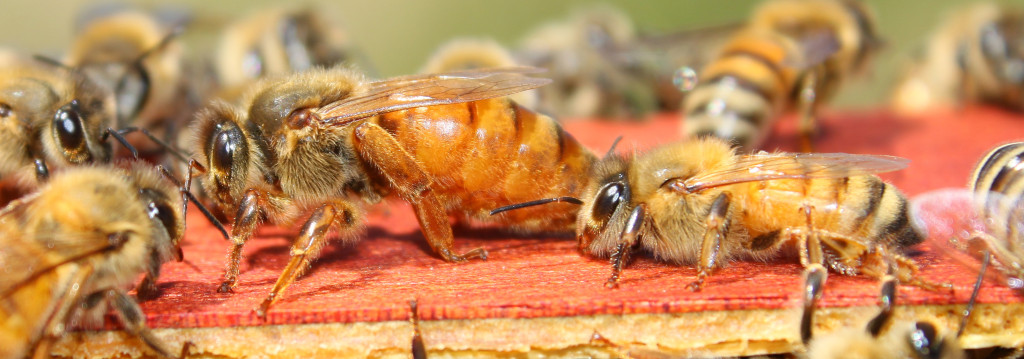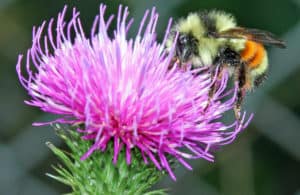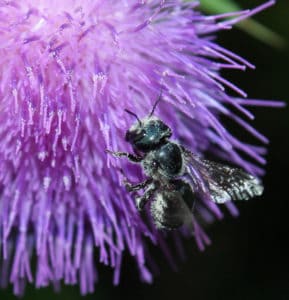
Ever wonder how bees can hold on so well? For starters, honey bees are insects that have 3 pairs of segmented legs. The legs can do more than just hold on, the tibia of the hind legs have adapted hair to hold pollen. When the hairs are filled with pollen,it is termed “pollen basket “or corbicula. The corbicula is found on bees in the family Apidae; other bees have similar branched hair structures called scopa. The forelegs contain antennae cleaners. The leg segments include coxa, trochanter, femur, tibia, tarsomeres (tarsal segments), and the tarsal claws.


The tarsal claws are at the end of the leg and responsible for clasping onto rougher surfaces. The tarsomeres allow the tarsal claw to move through many different angles assisting in grip. In the center of the tarsal claw there is a structure called the arolia. The arolia is a pad-like structure that helps the bees hold on to smoother surfaces and it acts like a suction cup. Some bee species to not have the arolia present, this helps in identifying them into different families. I have circled in orange the tarsal claw on the Melissodes bimaculata to show the location. I have included other images so you can see the range of the tarsal claws motion. Note: you can click the picture once to get a blown up image then click again for higher magnification.


Also in this region is the tarsal gland. This gland is responsible for footprint pheromones in honey bees. These pheromones assist in searching for nectar. The queen secretes an oily substance from her tarsal gland that inhibits queen cell construction that minimizes queen cell construction. When the queen bee begins to age she produces less of this substance.